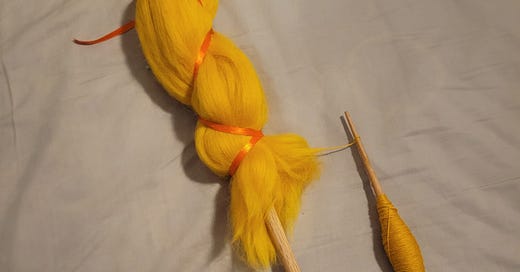When I first conceived of the idea that is now becoming Wyrd Weaving, an historical fantasy novel set between Northumbria and Svealand in the tumultuous early 9th century, I only knew two things for certain. I knew I wanted to write a story centering the lives of women, queer people, and gender-nonconforming people in the 800s. So often stories set in the “Viking Age” center only the pursuits of men (wealthy men especially), and I wanted to dig for what other stories were buried there, waiting to be told. I also knew without doubt that fiber arts would somehow comprise a significant portion of the story’s magical realism elements.
I’ve knitted since my late teens, and have harbored and interest in all sorts of fiber arts for even longer than that. When I decided to get serious about writing a story centering the lives of medieval women (in Europe primarily, though several other unique period cultures factor into the story as well), I knew I had to do a deep dive into historical spinning and weaving. Women at all levels of society spent more time on aspects of cloth production than any other chore during this period, yet arts like spinning and weaving are almost never shown in novels, movies, or TV set in the early Middle Ages. That wasn’t going to fly for Wyrd Weaving, a story inspired by the countless forgotten fiber artists who quite literally wove the history of our society.
This first short video about my (mis)adventures in historical textile research gives you a glimpse at how and why I learned in-hand or “twiddle” spinning, the style of spinning prominent in early 9th century northern Europe. Enjoy!







Share this post